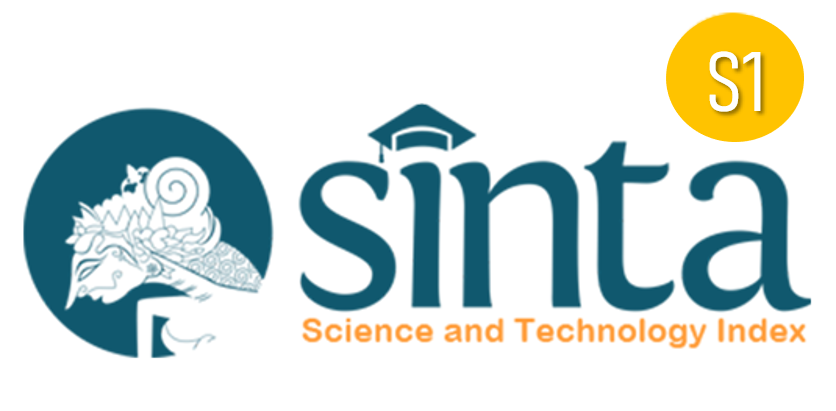Combined Pyrazole and Cu (II), Co (II) Metals: An Excellent Catalyst for Catecholase, Tyrosinase, Phenoxazinone Synthase, and Laccase for Oxygen Activation
Abstract
This study explores the catalytic behavior of pyrazole-based copper (II) and cobalt (II) complexes as biomimetic models for key oxidative enzymes (Catecholase, tyrosinase, phenoxazinone synthase, and laccase for oxygen activation). The primary objective was to activate molecular oxygen and oxidize phenolic substrates through the use of structurally designed transition metal complexes. Complexes were prepared in situ and characterized using UV-Vis, FTIR, and XRD spectroscopy. The catalytic performance was evaluated in aerobic conditions and three solvents with differing polarities. Copper-based systems exhibited superior efficiency in mimicking enzymatic activities due to their favorable coordination properties. Because the acetate ligand allows easy substrate access to the metal center, Cu(II)-acetate complexes yielded the most effective oxidation outcomes. These findings suggest that rational design of metal-ligand systems inspired by natural enzymes can enhance selective oxidation reactions. The approach provides a science- and technology-driven foundation for environmentally benign catalysis in chemical and environmental applications.
Keywords
Full Text:
PDFReferences
Alvi, S., Jayant, V., & Ali, R. (2022). Applications of Oxone® in organic synthesis: An emerging green reagent of modern era. ChemistrySelect, 7(23), e202200704.
Arakawa, H., Aresta, M., Armor, J. N., Barteau, M. A., Beckman, E. J., Bell, A. T., and Tumas, W. (2001). Catalysis research of relevance to carbon management: progress, challenges, and opportunities. Chemical Reviews, 101(4), 953-996.
Gligorich, K. M., and Sigman, M. S. (2009). Recent advancements and challenges of palladium II-catalyzed oxidation reactions with molecular oxygen as the sole oxidant. Chemical communications, 2009(26), 3854-3867.
Stahl, S. S. (2004). Palladium oxidase catalysis: selective oxidation of organic chemicals by direct dioxygen‐coupled turnover. Angewandte Chemie International Edition, 43(26), 3400-3420.
Olawade, D. B., Wada, O. Z., Egbewole, B. I., Fapohunda, O., Ige, A. O., Usman, S. O., and Ajisafe, O. (2024). Metal and metal oxide nanomaterials for heavy metal remediation: novel approaches for selective, regenerative, and scalable water treatment. Frontiers in Nanotechnology, 6, 1466721.
Massey, V. (1994). Activation of molecular oxygen by flavins and flavoproteins. Journal of Biological Chemistry, 269(36), 22459-22462.
Buglak, A. A., Kapitonova, M. A., Vechtomova, Y. L., and Telegina, T. A. (2022). Insights into molecular structure of pterins suitable for biomedical applications. International Journal of Molecular Sciences, 23(23), 15222.
Bugg, T. D. (2003). Dioxygenase enzymes: catalytic mechanisms and chemical models. Tetrahedron, 59(36), 7075-7101.
Thierbach, S., Bui, N., Zapp, J., Chhabra, S. R., Kappl, R., and Fetzner, S. (2014). Substrate-assisted O2 activation in a cofactor-independent dioxygenase. Chemistry & Biology, 21(2), 217-225.
Rolff, M., Schottenheim, J., Decker, H., and Tuczek, F. (2011). Copper–O 2 reactivity of tyrosinase models towards external monophenolic substrates: molecular mechanism and comparison with the enzyme. Chemical Society Reviews, 40(7), 4077-4098.
Itoh, S., and Fukuzumi, S. (2007). Monooxygenase activity of type 3 copper proteins. Accounts of chemical research, 40(7), 592-600.
Parmeggiani, C., and Cardona, F. (2012). Transition metal based catalysts in the aerobic oxidation of alcohols. Green Chemistry, 14(3), 547-564.
Mallat, T., and Baiker, A. (2004). Oxidation of alcohols with molecular oxygen on solid catalysts. Chemical Reviews, 104(6), 3037-3058.
Friedle, S., Reisner, E., AND Lippard, S. J. (2010). Current challenges of modeling diiron enzyme active sites for dioxygen activation by biomimetic synthetic complexes. Chemical Society Reviews, 39(8), 2768-2779.
van den Beuken, E. K., and Feringa, B. L. (1998). Bimetallic catalysis by late transition metal complexes. Tetrahedron, 54(43), 12985-13011.
Titi, A., Dahmani, M., Abbaoui, Z., El Kodadi, M., ET-Touhami, A., Yahyi, A., and Siaj, M. (2024). New catalysts based on carboxylate Sn (IV) complexes used in the oxidation reaction of 3, 5-di-tert-butylcatechol to 3, 5-di-tert-butyl-o-benzoquinone. Reaction Kinetics, Mechanisms and Catalysis, 137(1), 133-148.
Punniyamurthy, T., Velusamy, S., and Iqbal, J. (2005). Recent advances in transition metal catalyzed oxidation of organic substrates with molecular oxygen. Chemical Reviews, 105(6), 2329-2364.
Knorr, L. (1883). Einwirkung von acetessigester auf phenylhydrazin. Berichte der deutschen chemischen Gesellschaft, 16(2), 2597-2599.
v. Pechmann, H. (1898). Pyrazol aus acetylen und diazomethan. Berichte der deutschen chemischen Gesellschaft, 31(3), 2950-2951.
Ojwach, S. O., and Darkwa, J. (2010). Pyrazole and (pyrazol-1-yl) metal complexes as carbon–carbon coupling catalysts. Inorganica Chimica Acta, 363(9), 1947-1964.
Girard, C., Önen, E., Aufort, M., Beauvière, S., Samson, E., amd Herscovici, J. (2006). Reusable polymer-supported catalyst for the [3+ 2] Huisgen cycloaddition in automation protocols. Organic Letters, 8(8), 1689-1692.
Gong, Y. D., and Lee, T. (2010). Combinatorial syntheses of five-membered ring heterocycles using carbon disulfide and a solid support. Journal of Combinatorial Chemistry, 12(4), 393-409.
Nandiyanto, A.B.D., Ragadhita, R., and Fiandini, M. (2023). Interpretation of Fourier Transform Infrared Spectra (FTIR): A practical approach in the polymer/plastic thermal decomposition. Indonesian Journal of Science and Technology, 8(1), 113-126.
Obinna, E.N. (2022). Physicochemical properties of human hair using Fourier Transform Infra-Red (FTIR) and Scanning Electron Microscope (SEM). ASEAN Journal for Science and Engineering in Materials, 1(2), 71-74.
Nandiyanto, A.B.D., Oktiani, R., and Ragadhita, R. (2019). How to read and interpret FTIR spectroscope of organic material. Indonesian Journal of Science and Technology, 4(1), 97-118.
DOI: https://doi.org/10.17509/ajse.v5i2.88662
Refbacks
- There are currently no refbacks.
Copyright (c) 2025 Universitas Pendidikan Indonesia

This work is licensed under a Creative Commons Attribution-ShareAlike 4.0 International License.












